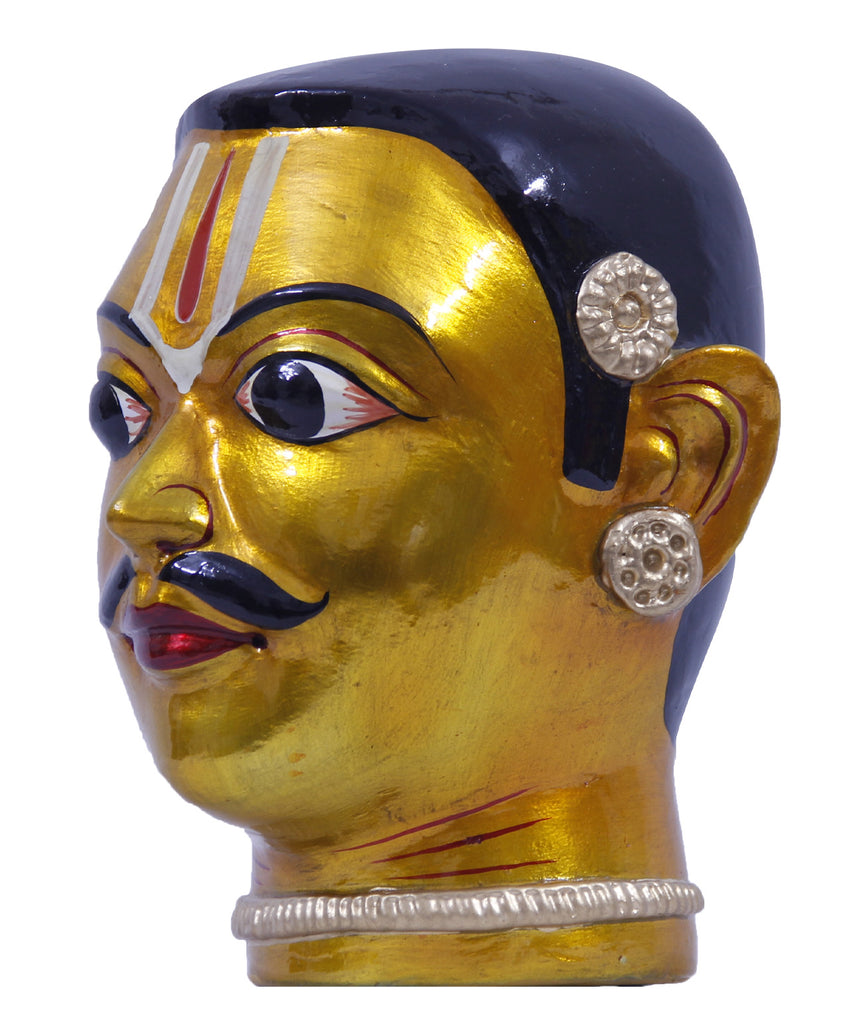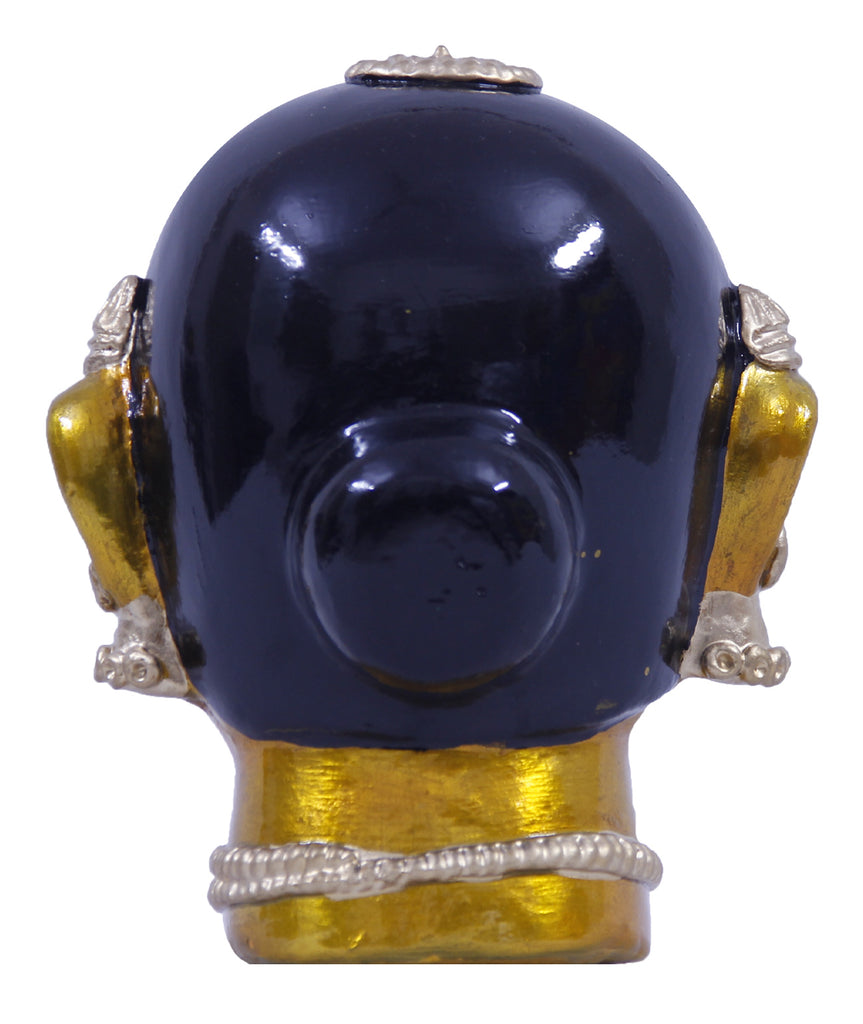- Home
- Heads (Pair) 02
Loading...
Heads (Pair) 02
All orders are insured for transit.
We ship worldwide.
All orders are insured for transit.
We ship worldwide.
Details
| Size (WxDxH): | 6 x 6.5 x 7 inches |
| Material: | Wood with Gilt and Zinc Oxide |
Description
Man - 6 x 6.5 x 7 inches
Woman - 6 x 6.5 x 6.5 inches
-
Description
Read MoreStriking and stunning, this pair of heads is an exquisite example of Kinnala art. The detailing of the jewelry, facial features and adornments make the pair a strong statement piece. The shining gold, in all its splendour, is a result of using zinc, which makes it an expensive process for the Kinnala artists. The heads measure as follows:
Man - 6 x 6.5 x 7 inches
Woman - 6 x 6.5 x 6.5 inches -
ABOUT Kinnala Art
Read MoreA relatively unknown and ancient Indian art form dating back to the 15th-16th centuries, Kinnala comes from a village called Kinhal in the Koppal district of Karnataka, India. It originated during the rule of the Vijaynagara Empire, when kings invited crafts people from across India to come and work in their capital, Hampi. The early practitioners of Kinnala, called ‘Çhitragars’ (which literally means the one who draws and paints), were painters of temples and palaces in Hampi. The famous mural paintings in the Pampapateshwara Temple, and the intricate work on the wooden chariot at Hampi, were completed by ancestors of the Kinnala artists of today.
The wooden idols of Kinnala have been accorded a Geographical Indication (GI tag number 159). A GI is a sign used on products that have a specific geographical origin and possess qualities or a reputation that are due to that origin. Today, there are only 25 families in Kinhal village practicing the art of Kinnala.
Kinnala idols are known for their vibrant colours and glossy finish. They usually depict gods, mythological characters or animals. Each Kinnala idol is entirely handmade, and the process is very laborious. The wood used to create the idols is from a tree called ‘Ponki Marra’, which grows in and around Kinhal village. This wood is soft and light weight, making it easy to sculpt.
A Kinnala artist first roughly draws the character on the wood, and then chisels to create an initial model. After this, a mixture of liquid tamarind and pebble paste is applied, and the idol is left to dry. Finer details are then carved out and the final shape is given. If the piece is very large, different components such as the limbs and head are made separately and joined together using a mixture made from boiling a mixture of ground tamarind seeds, wood powder and thin jute strands. A paste of pebble powder and liquid gum is used as an adhesive for embossing patterns including jewelry, on the idols. Layers of cloth soaked in tamarind paste are applied to coat the figure. Once the idol is complete, it is covered in white paint, made using chalk powder, after which colours such as red, green, blue and yellow are applied. In some pieces, a rare technique is used without the use of fabric, where fine beaten zinc mixed with herbs is applied to the wood, producing a shiny gold colour. This is a lengthy and costly process, and hence, only a few families still practice the technique.
The lack of financial support, adequate training and economic viability is making the next generation in Kinnala artist families reluctant to carry on this centuries’ old tradition. Wider recognition, and support by patrons will help sustain this incredible artform.
-
Details
Size (WxDxH): 6 x 6.5 x 7 inches Material: Wood with Gilt and Zinc Oxide -
Returns
We accept returns within 7 days of delivery if the item reaches you in damaged condition. -
Shipping
Shipping costs are extra, and will be calculated based on the shipping address.All orders are insured for transit.
We ship worldwide.
This item has been added to your shopping cart.
You can continue browsing
or proceed to checkout and pay for your purchase.
This item has been added to your
shopping cart.
You can continue browsing
or proceed to checkout and pay for
your purchase.
This item has been added to your wish list.
You can continue browsing or visit your Wish List page.
Are you sure you want to delete this item from your Wish List?
Are you sure you want to delete this
item from your Wish List?



























































































 View Full Screen
View Full Screen



